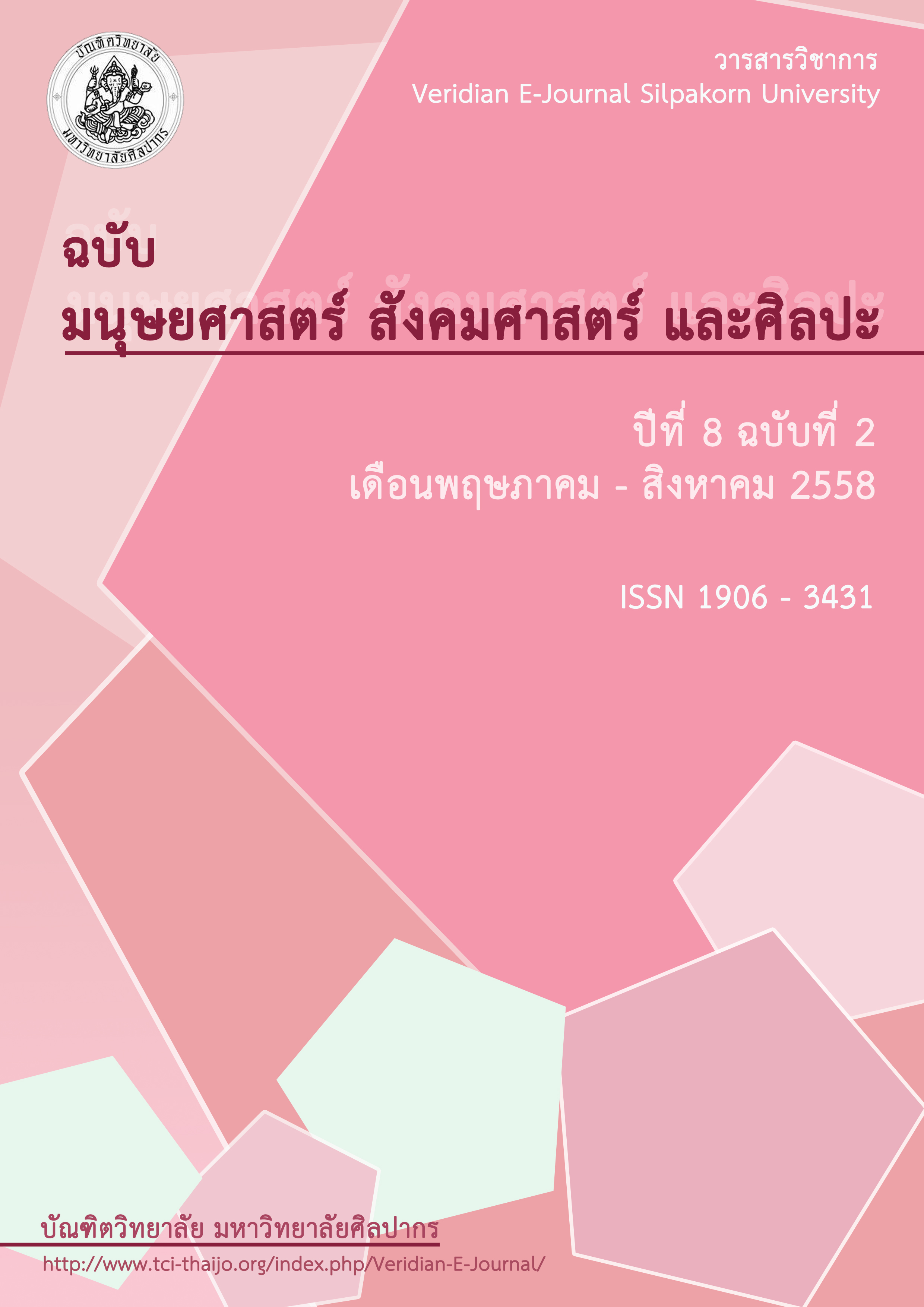แนวทางการจัดการที่มีคุณภาพ ของวิสาหกิจชุมชน เพื่อการบรรลุยุทธศาสตร์ด้านการอยู่ดีมีสุข ใน จังหวัดนครปฐม
Main Article Content
Abstract
บทคัดย่อ
งานวิจัยฉบับนี้มีวัตถุประสงค์ เพื่อค้นหาแนวทางทางการจัดการที่มีคุณภาพ เพื่อการบรรลุยุทธศาสตร์ด้านการอยู่ดีมีสุข ในวิสาหกิจชุมชน จังหวัดนครปฐม โดยใช้เทคนิคการวิจัยเชิงปริมาณ อาศัยตัวแบบสมการเชิงโครงสร้าง ประชากรได้แก่ สมาชิกวิสาหกิจชุมชน และเครือข่าย ในจังหวัดนครปฐม จำนวน 3,171 คน คำนวณหาขนาดกลุ่มตัวอย่างตามสูตรของแฮร์ และคณะ ได้กลุ่มตัวอย่างจำนวน 356 คน ผู้วิจัยใช้การสุ่มแบบแบ่งชั้น จำแนกตามอำเภอทั้ง 7 ในจังหวัดนครปฐม เครื่องมือได้แก่แบบสอบถามที่ผ่านการทดสอบความตรงเชิงเนื้อหา และความเที่ยงด้วย วิธีอัลฟา ครอนบาค ได้ค่าความเที่ยงในช่วง 0.70-0.97
วิเคราะห์ข้อมูลข้อมูลด้วยสถิติพรรณนาโดยใช้โปรแกรมสำเร็จรูปทางสถิติ และวิเคราะห์สมการโครงสร้างโดยใช้โปรแกรมลิสเรล ผลการวิจัยพบว่า ตัวแบบความสัมพันธ์เชิงสาเหตุของการการจัดการที่มีคุณภาพ ของวิสาหกิจชุมชน เพื่อการบรรลุยุทธศาสตร์ด้านการอยู่ดีมีสุข ในจังหวัดนครปฐม มีความสอดคล้องข้อมูลเชิงประจักษ์ (c2/df = 3.36 ; RMSEA = 0.012 ;NFI = 0.97;CFI = 0.98; RMR = 0.035; GFI = 0.94 ; AGFI = 0.91) ผู้ตอบแบบสอบถามส่วนใหญ่เป็นเพศหญิง (ร้อยละ 71.9) มีอายุเฉลี่ย 50 ปี สถานภาพสมรส (ร้อยละ 64.9) ระยะเวลาประกอบวิสาหกิจเฉลี่ย 5 ปี และมีจำนวนสมาชิกโดยเฉลี่ย 15 คน ผลการวิเคราะห์ตัวแบบการจัดการที่มีคุณภาพ ของวิสาหกิจชุมชน เพื่อการบรรลุยุทธศาสตร์ด้านการอยู่ดีมีสุข ใน จังหวัดนครปฐม พบว่า การจัดการทางการผลิต และ การจัดการทางการบัญชี มีอิทธิพลทางตรงเชิงบวกต่อ การบรรลุยุทธศาสตร์ด้านการอยู่ดีมีสุข ในวิสาหกิจชุมชน จังหวัดนครปฐม (β=0.98)และ (β=0.47) ตามลำดับ ส่วนการพัฒนาทรัพยากรมนุษย์ และ การจัดการทางการตลาด มีอิทธิพลทางตรงเชิงลบต่อ การบรรลุยุทธศาสตร์ด้านการอยู่ดีมีสุข ในวิสาหกิจชุมชน จังหวัดนครปฐม (β= -0.67)และ (β=-0.34) ตามลำดับ
คำสำคัญ: วิสาหกิจชุมชน การบรรลุยุทธศาสตร์ ตัวแบบการจัดการ
Abstract
The purpose of this research was to find out quality management approach to achieve the strategy on well-being in community enterprise of Nakhon Pathom Province. It used the quantitative research with the structural equation modeling. The population was3,196 of the members of the community enterprise and its networks in the province of Nakhorn Pathom. It calculated the size of the representative sample group by the calculation of Hair et al. The number of the representative sample in the group was 356. The researcher used the stratified random sampling in each of the 7 districts of Nakhorn Pathom province. The tool was the questionnaire which passed the content validity and accuracy by the Alpha Cronbach’s method at 0.70 - 0.97. Descriptive analysis was performed by using a statistical package. The conceptual model was empirically validate by using structural equation modeling with LISREL. The research finding was The quality management approach to achieve the strategy on well-being in community enterprise of Nakhon pathom fit the data well, as indicated by excellent fit indices, (c2/df = 3.36 ; RMSEA = 0.012 ; NFI = 0.97; CFI = 0.98; RMR = 0.035; GFI = 0.94 ; AGFI = 0.91)
The result of the research showed that most of the people who answered the questionnaire are female (71.9 %). The mean age is 50 years old with the marital status (64.9 %) and 5 years of the mean length of work in the enterprise. The mean number of the members was 15. The researched result, of the quality management approach to achieve the strategy on well-being in community enterprise of Nakhorn Pathom province, founds that the production management and management accounting affects positively and directly to the strategy on well-being in community enterprise in Nakhorn Pathom province (β=0.98) and (β=0.47) respectively. The development of human resources and marketing management affects negatively and directly to the strategy on well-being in community enterprise in Nakhorn Pathom province (β= -0.67) and (β=-0.37) respectively.
Key words: community enterprise, strategic achievement, model of management

